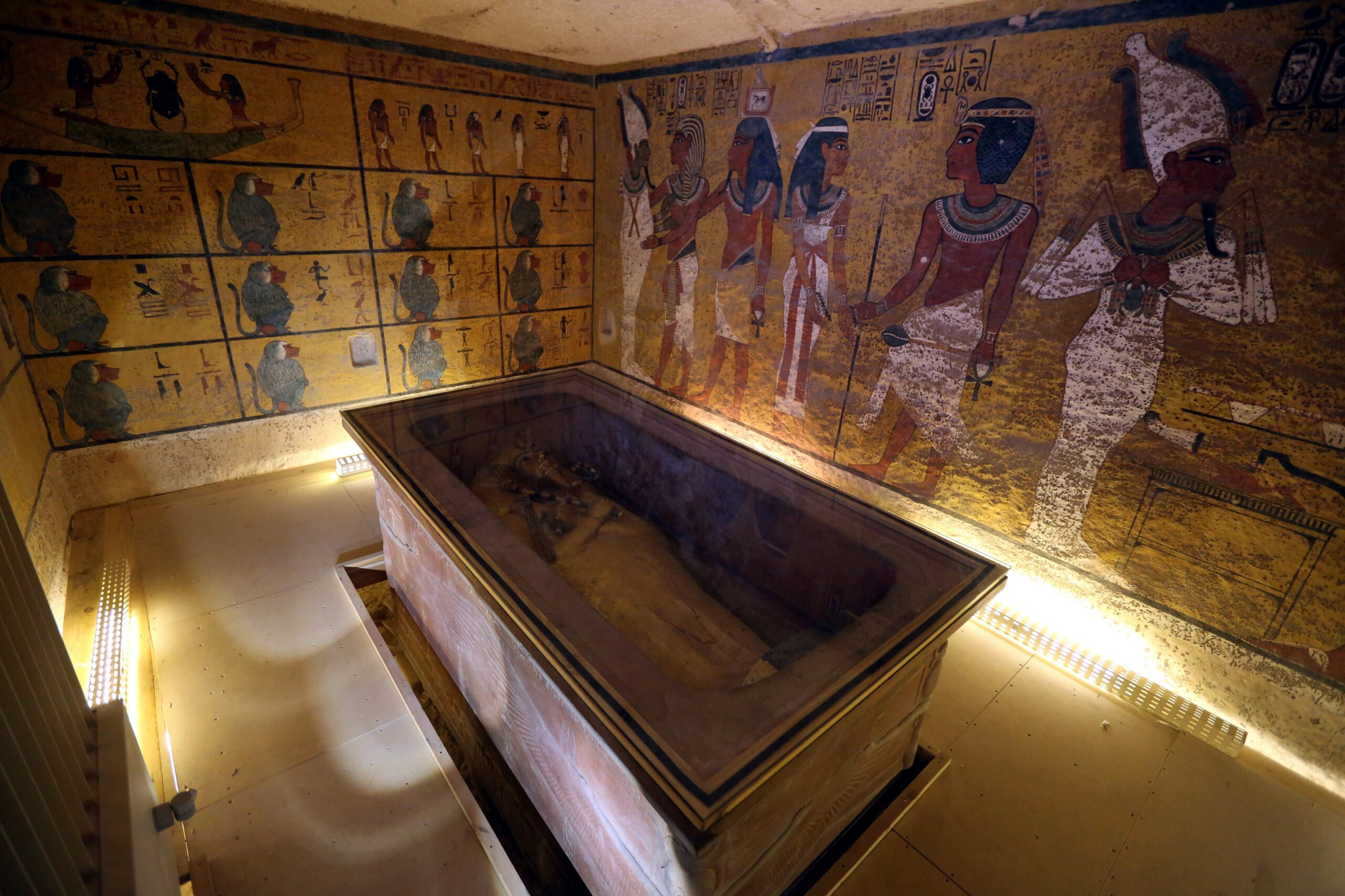SUMMARY
This is AI generated summarization, which may have errors. For context, always refer to the full article.

CAIRO, Egypt – Radar scans of the tomb of pharaoh Tutankhamun in the ancient necropolis of Luxor showed a “90%” chance of two hidden chambers, possibly containing organic material, Egypt’s antiquities minister said Thursday, March 17.
Experts had scanned the tomb to find what a British archaeologist believes could be the resting place of Queen Nefertiti, the legendary beauty and wife of Tutankhamun’s father whose mummy has never been found.
Preliminary scans of Tutankhamun’s tomb reveal “two hidden rooms behind the burial chamber” of the boy king, Antiquities Minister Mamduh al-Damati told reporters.
“Yes, we have some empty space, but not total empty, including some organic and metal material,” Damati said in English.
When asked how certain he was, he said there was a “90%” chance.
A study by renowned British archaeologist Nicholas Reeves has said that Nefertiti’s tomb could be in a secret chamber adjoining Tutankhamun’s tomb in the Valley of Kings in Luxor in southern Egypt.
Reeves, professor of archaeology at the University of Arizona, believes one door of Tutankhamun’s tomb could conceal the burial place of Nefertiti.
According to him, Tutankhamun, who died unexpectedly, was buried hurriedly in an underground chamber probably not intended for him.
His death would have forced priests to reopen Nefertiti’s tomb 10 years after her death because the young pharaoh’s own mausoleum had not yet been built.
Damati said the two hidden chambers were behind the northern and the western walls of Tutankhamun’s burial chamber.
“What it means, we have two extensions” behind Tutankhamun’s burial chamber, he said.
When asked if the organic material could be a mummy, Damati said: “I cannot say. I can only say we have here some organic materials.”
New test planned
Damati and Reeves differ on whose mummy they expect to find, with the minister previously saying that Tutankhamun’s tomb may contain the mummy of Kiya, a wife of Akhenaten.
On Thursday, he said a new radar test would be conducted on March 31.
“Another radar, more improved, will check and measure for the dimensions of the wall behind and the thickness of the walls,” Damati said, adding that the result of the new test would be announced in Luxor on April 1.
Nefertiti played a major political and religious role in the 14th century BC.
She actively supported her husband Akhenaten – Tutankhamun’s father – who temporarily converted ancient Egypt to monotheism by imposing the cult of sun god Aton.
Tutankhamun died aged 19 in 1324 BC after just 9 years on the throne. His final resting place was discovered by another British Egyptologist, Howard Carter, in 1922.
Experts are also scanning 4 pyramids to unravel the mysteries of the ancient monuments.
Using infrared technology, a team of researchers have been scanning the pyramids of Khufu, also known as the Great Pyramid, and Khafre at Giza and the Bent and Red pyramids in Dahshur, all south of Cairo.
Operation Scan Pyramids, which aims to search for hidden rooms inside those 4 monuments, is expected to continue until the end of 2016. – Tony Gamal-Gabriel, AFP / Rappler.com
Add a comment
How does this make you feel?
There are no comments yet. Add your comment to start the conversation.